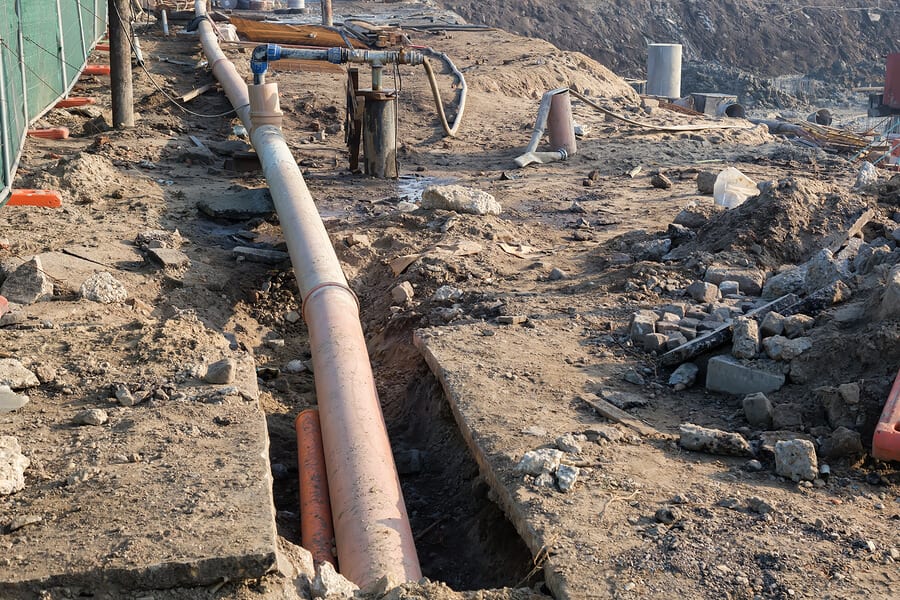Dewatering is a significant component of constructing shallow-water pipelines and is incredibly important for many of today’s pipeline projects. It seems like the construction of shallow water pipelines is increasing, with more and more lines running through areas like river crossings and streambeds.
Failing to dewater correctly can make for a long, stressful project. If you do not use the proper methods, you will not have dry working conditions. The longer you go without dry working conditions, the more risk you run of delaying your project. Fortunately, there is one tool that has proven to be sufficient time and time again for dewatering projects.
Sandbags Are Not an Effective Tool – Pipeline Project
For years, the oil and gas pipeline industry used sandbags as a dewatering tool. However, there are numerous drawbacks to using them. In fact, over the years, many companies have found them to be completely ineffective.
For one, sandbags are not user-friendly. They’re not only challenging to fill, but they are also difficult to transport and arrange. They are heavy, making them extremely difficult to handle. Every sandbag that is laid down must also be picked back up when the project is complete. From the standpoint of time and efficiency, sandbags are not a good option.
Furthermore, once your project is complete, you will need to follow Hazmat procedures to dispose of sandbags because sandbags absorb water, filling them with bacteria. Although this is not necessarily difficult for companies working on constructing shallow-water pipelines, it’s certainly an inconvenience that you should avoid if possible. Hazmat disposals can also prove to be expensive.
Furthermore, many have found that sandbags are ineffective when it comes to keeping water out. They do not provide a water-tight seal, which means they are prone to leaking. What good is using a dewatering tool when constructing shallow-water pipelines if it’s not going to do its intended job?
The Aqua-Barrier Cofferdam
Fortunately, innovation has yielded a new dewatering solution that is much more effective than sandbags. More and more companies have begun using the Aqua-Barrier Cofferdam on their shallow water pipeline construction projects. This project is a portable, inflatable dam that can be transported from job site to job site easily.
The Aqua-Barrier Cofferdam is effective thanks to its three-component stabilization design.
1. The Internal Baffle System is a series of internal restraints used to lock the barrier into place. This has been proven to be especially useful when there is higher hydrostatic pressure on one side of the dam.
2. The Freeboard, or the amount of inflated barrier above water level, is also important. The Aqua-Barrier requires at least 25% freeboard, making it an ideal option when working in shallow waters. Keep in mind that you may need to leave additional freeboard exposed depending on the conditions of your project. If your construction plan leaves you susceptible to high water velocity or slick soil conditions, you may need additional freeboard.
3. Surface Friction is needed whenever there are uneven hydrostatic pressures.


